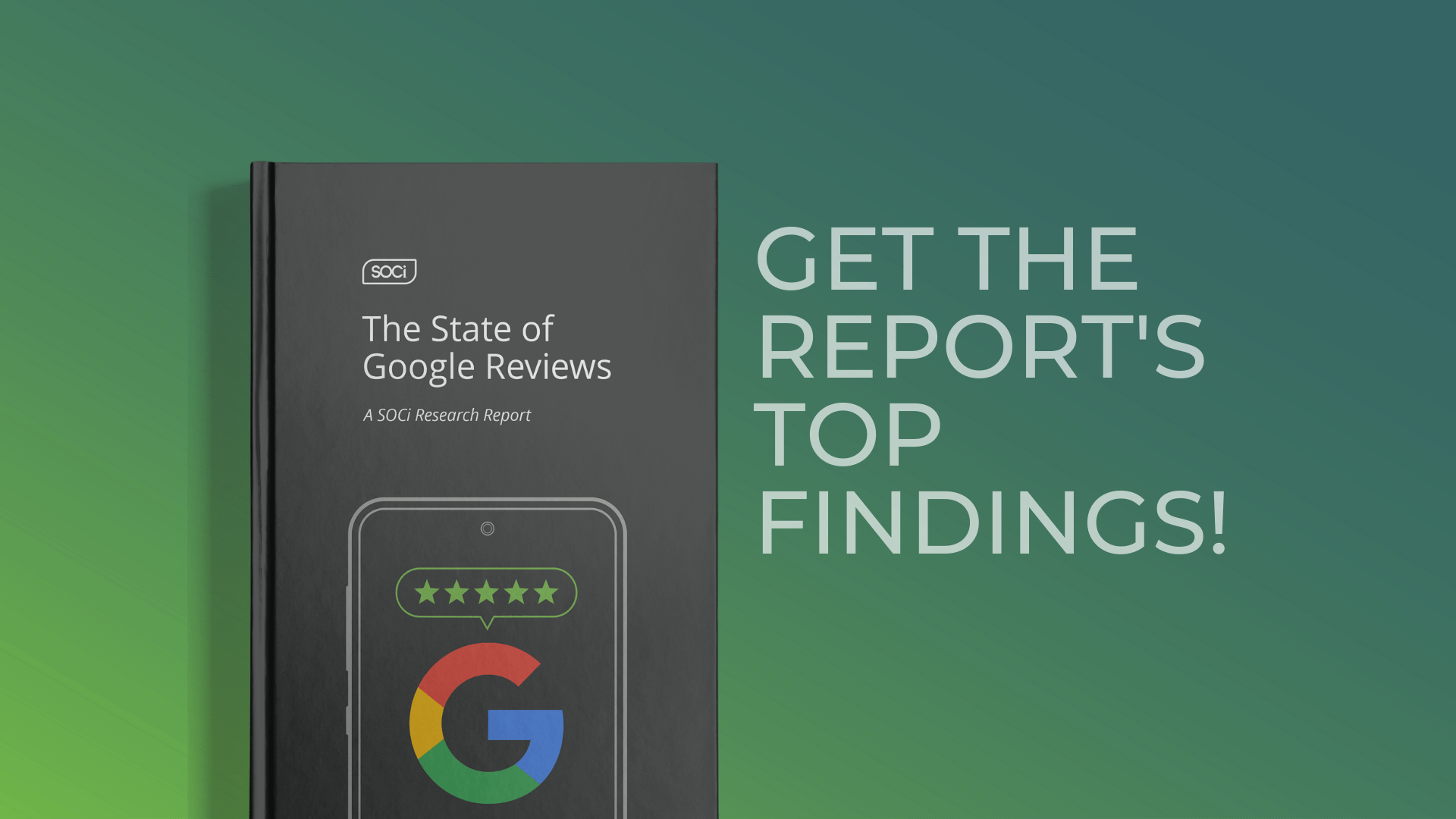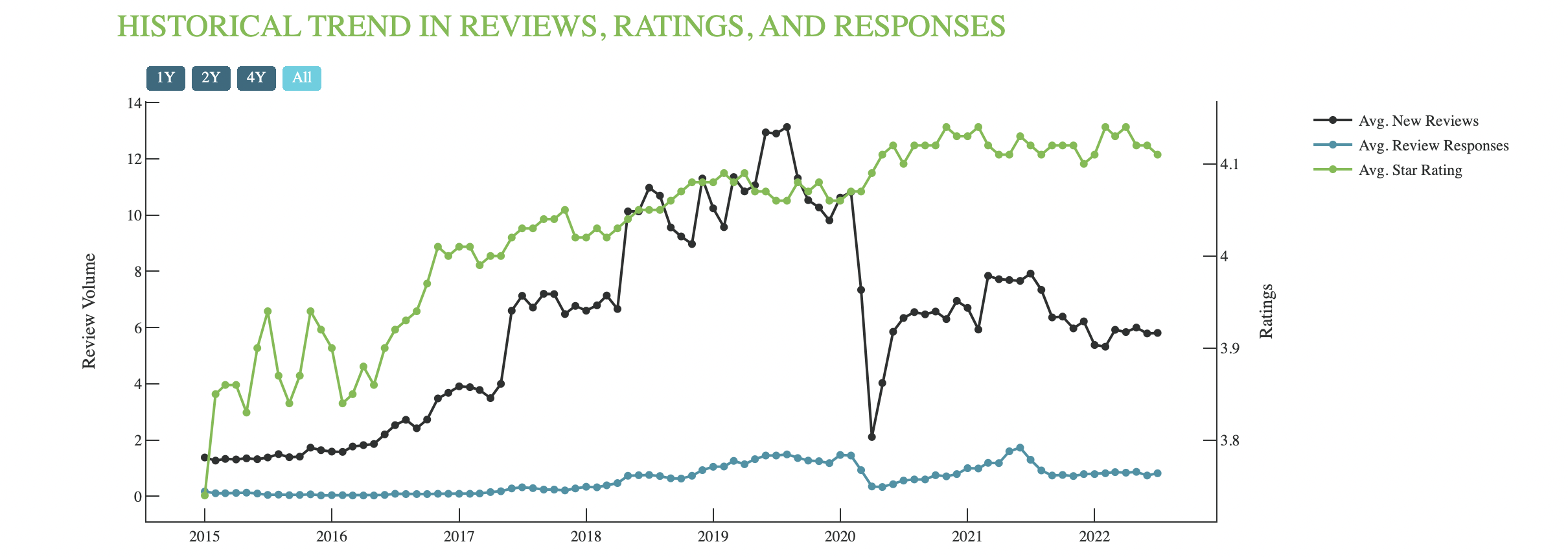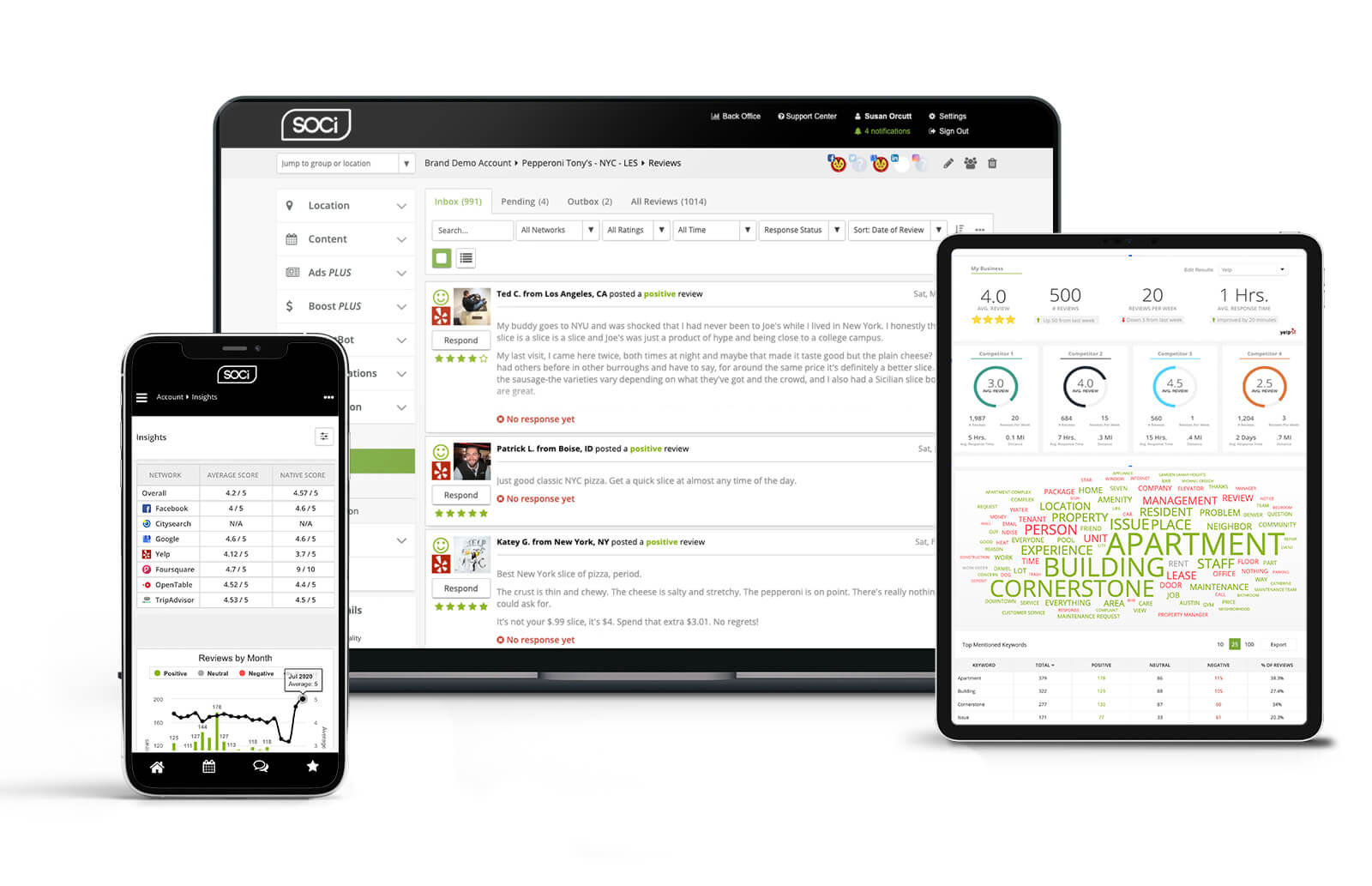Top Findings From SOCi’s State of Google Reviews Research Report

Top Findings From SOCi's State of Google Reviews Research Report
SOCi recently released a new research report, The State of Google Reviews. This report analyzed the impact of Google reviews across different industries. It also looked at recent historical trends in Google reviews that might give marketers insight into the future of online reputation. Eighty-nine percent of consumers say they read online reviews before making a purchase decision. As a multi-location marketer, understanding Google reviews is a must. While we encourage you to dive into the full research report if time allows, this blog breaks down the top findings into easy-to-digest pieces. We also provide tips your multi-location business can leverage to improve its current reputation management strategy! Let’s get started.A Look Into the Dataset
To create this report, we analyzed a dataset of 31,326 Google profiles from multi-location brands managed by SOCi. These Google profiles provided historical data on 4.9 million reviews dating back to 2007 — the beginning of time for Google reviews. While reviews ranged from 2007 to 2022, the report focuses on reviews from 2015 to the present time. During this time, reviews began to dominate the world of online reputation management for multi-location businesses. We covered a broad range of business types for this report by studying fifty-three businesses from 18 industries. Now that you understand the data set, let’s get into the top trends that the report uncovered!High-Level Trends in Google Reviews
After analyzing the 4.9 million reviews, there are several essential trends for multi-location marketers to be aware of.Review Volume Growth Has Plateaued
Google is still the top review platform, with Yelp and Facebook following behind. Our 2022 Localized Marketing Benchmark Report (LMBR) found that the average business has 223.9 reviews on Google, compared to 19.8 reviews on Yelp and 24.3 recommendations on Facebook. Although review volume on Google is substantial, review growth hit its peak in August 2019, with the average business receiving 13.1 reviews during that month. COVID-19 likely impacted review volume, with Google shutting down reviews during the early months of the pandemic. As of July 2022, the average business is only generating 5.8 new reviews per month, a 56 percent dropoff from peak volumes before the pandemic. This lower (though relatively steady) volume of new reviews may reflect a turn in consumer attention towards social media platforms like Instagram and TikTok as a source for local recommendations.Average Star-Ratings Subject to Inflation
Google reviews skew positively. As of July 2022, the average business on Google has an average rating of 4.11 stars. This rating has crept higher and higher over the years. In 2015, the average star rating for businesses studied in the report was 3.74 stars. So what does this mean for your multi-location business? While star ratings are trending up, ensuring your business’s online reputation meets or exceeds these averages is crucial. To get a better idea of where your business’s online reputation stands compared to others in your industry, check out our previously mentioned 2022 LMBR.
Reviews With Text Are Less Common Over Time
Another prominent trend found in the report relates to reviews without text. Google is one of the few local platforms that permit users to leave a rating without any corresponding review text — otherwise known as “ratings-only reviews.” Fifty-two percent of all reviews studied in our data had no text. In 2015, 76.2 percent of Google reviews included text; today, the percentage is just 54.2 percent. However, reviews with text are slightly up in 2021-2022 compared to 2019-2020. Reviews with text give potential customers insight into what to expect when visiting your business. While reviews are generally a good thing, your business should focus on gaining more reviews that include information about a customer’s experience. Below, you’ll find a graph recapping all three of the historical trends covered in this section.
Key Takeaways for Your Multi-Location Business to Leverage
While our research uncovered significant trends in Google reviews, there are additional key takeaways critical for multi-location marketers to be aware of. Many of the key takeaways quantify how reviews impact conversion. Our report defines conversion as the proportion of actions to searches. In other words, the proportion of appearances in search that result in a conversion-oriented action such as a phone call, a website click, or a request for directions. Our team looked at the influence of star ratings, review volume, and review response on conversion. We found that:- Star rating: Businesses with higher star ratings are more likely to be chosen by consumers over the competition. Conversion improves by 44 percent when a business increases its average star rating by one full star.
- Review volume: Consumers are also more likely to choose a business with more reviews. For every ten new reviews earned, the conversion of Google profiles improves by 2.8 percent.
- Review Response: Consumers prefer businesses that respond to reviews. For every 25 percent of reviews responded to, conversion of Google profiles improves by 4.1 percent.
 The report also dives into review trends by industry, including review volume, average star ratings, and review length! Download the full report to see how your multi-location business compares to others in your industry.
The report also dives into review trends by industry, including review volume, average star ratings, and review length! Download the full report to see how your multi-location business compares to others in your industry.
Start Dominating Your Brand’s Online Reputation
As you can see, Google reviews play a significant role in converting potential customers into sales. Now that you understand the importance of your business’s reputation management efforts, it’s time to improve them. Managing and responding to reviews across 100s or 1,000s of business locations can be challenging, but SOCi Reviews is here to help! Through SOCi, users can view every action taken on reviews. Your local, regional, and corporate teams will always know which reviews and social engagements are addressed and which still require attention to ensure the prompt responses consumers expect. SOCi Reviews supports all major reputation and review networks.





